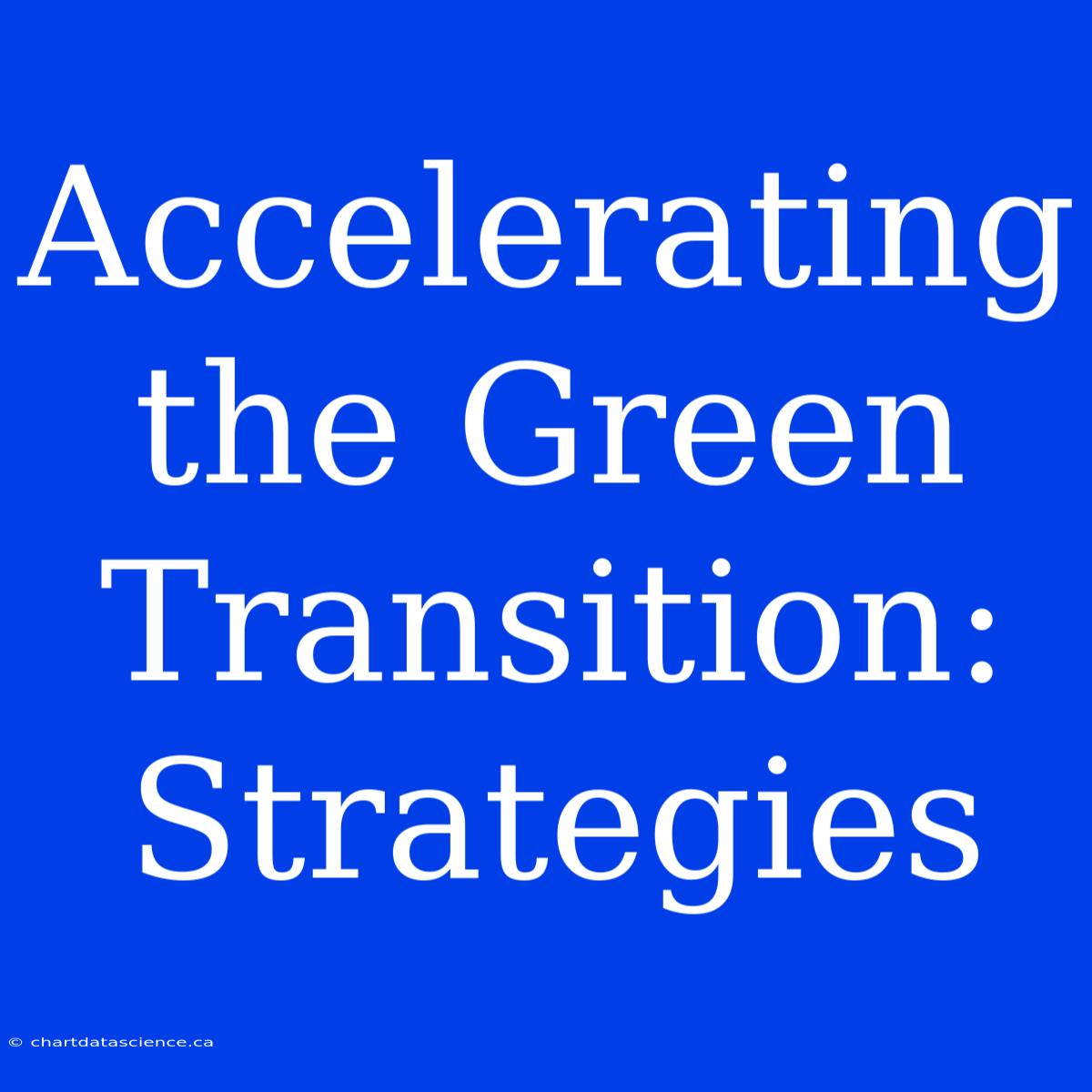Accelerating the Green Transition: Strategies for a Sustainable Future
The climate crisis is no longer a distant threat; it's a reality we face today. As the planet heats up and extreme weather events become more frequent, the urgency to accelerate the green transition has never been greater. But how do we move from talk to action? What strategies can we implement to drive a sustainable future?
The Green Transition: What is it, and why does it matter?
The green transition refers to the shift towards a low-carbon economy. It involves transitioning from fossil fuels to renewable energy sources, reducing greenhouse gas emissions, and promoting sustainable practices across all sectors. The stakes are high. A successful green transition is crucial for mitigating climate change, preserving biodiversity, and securing a healthy planet for future generations.
Accelerating the Transition: Strategies for Success
1. Embracing Renewable Energy Sources:
- Investment is key: Governments and private companies need to invest heavily in research, development, and deployment of renewable energy technologies like solar, wind, and hydropower.
- Scaling up renewable energy projects: We need to see a significant increase in the scale and scope of renewable energy installations worldwide.
- Smart grids and energy storage: To maximize renewable energy utilization, we need to invest in smart grids and energy storage technologies to address the intermittency of renewable energy sources.
2. Investing in Energy Efficiency:
- Green buildings and infrastructure: Promoting energy-efficient building codes, standards, and technologies is crucial for reducing energy consumption.
- Smart appliances and energy-saving solutions: Encouraging the adoption of energy-efficient appliances and innovative solutions like smart thermostats can significantly reduce energy consumption.
- Public transportation and sustainable mobility: Shifting towards efficient public transportation systems and promoting sustainable modes of transportation like cycling and walking will play a critical role in reducing emissions.
3. Embracing Sustainable Practices:
- Circular economy: Transitioning towards a circular economy where resources are used efficiently and waste is minimized will significantly reduce environmental impact.
- Sustainable agriculture and food systems: Adopting sustainable agricultural practices, promoting plant-based diets, and reducing food waste are essential steps towards a more sustainable future.
- Responsible consumption and production: Consumers have a powerful role to play. By making conscious choices about the products they buy, the companies they support, and their overall consumption patterns, they can drive demand for sustainable practices.
4. Fostering Innovation and Technological Advancements:
- Carbon capture and storage: Developing and deploying carbon capture and storage technologies can help mitigate emissions from hard-to-abate sectors like industrial processes.
- Green hydrogen: Exploring and developing green hydrogen as a clean energy source is crucial for decarbonizing energy-intensive sectors.
- Biotechnology and biomimicry: Leveraging biotechnology and biomimicry can lead to innovative solutions for sustainable materials, processes, and products.
5. Government Policies and Incentives:
- Carbon pricing and emissions trading: Implementing carbon pricing mechanisms like carbon taxes and emissions trading schemes can incentivize businesses to reduce emissions.
- Renewable energy targets and subsidies: Setting ambitious renewable energy targets and providing financial incentives for renewable energy projects can accelerate deployment.
- Research and development funding: Governments need to allocate significant funding for research and development of clean technologies.
The Green Transition: A Collective Effort
The green transition is not just a challenge; it's an opportunity to create a more sustainable, equitable, and prosperous future. It requires a collective effort from governments, businesses, individuals, and organizations worldwide. By working together, we can accelerate the green transition and secure a healthier planet for generations to come.

